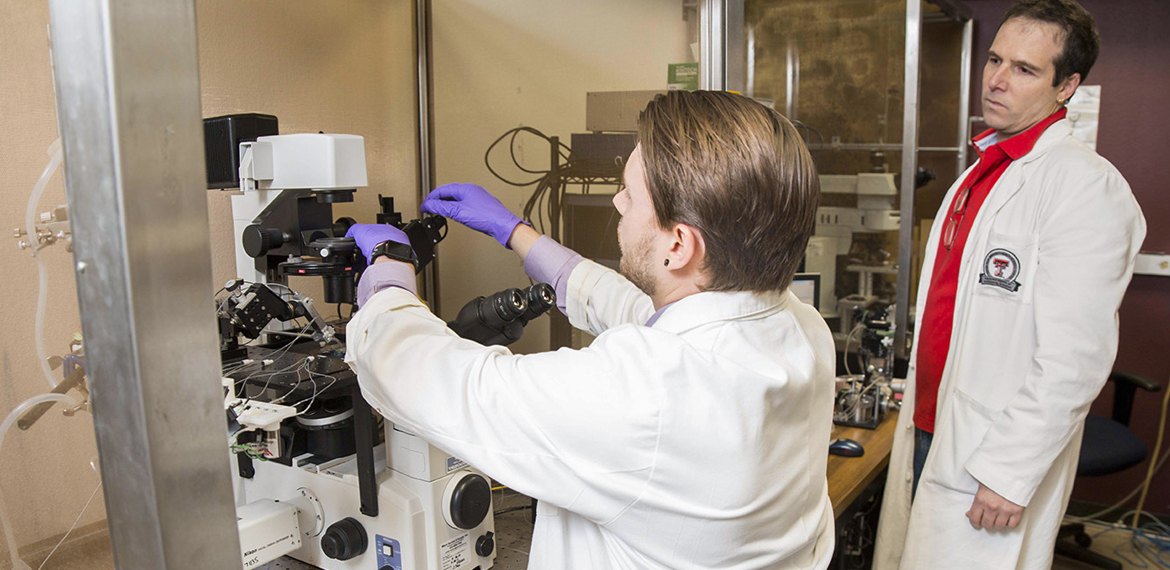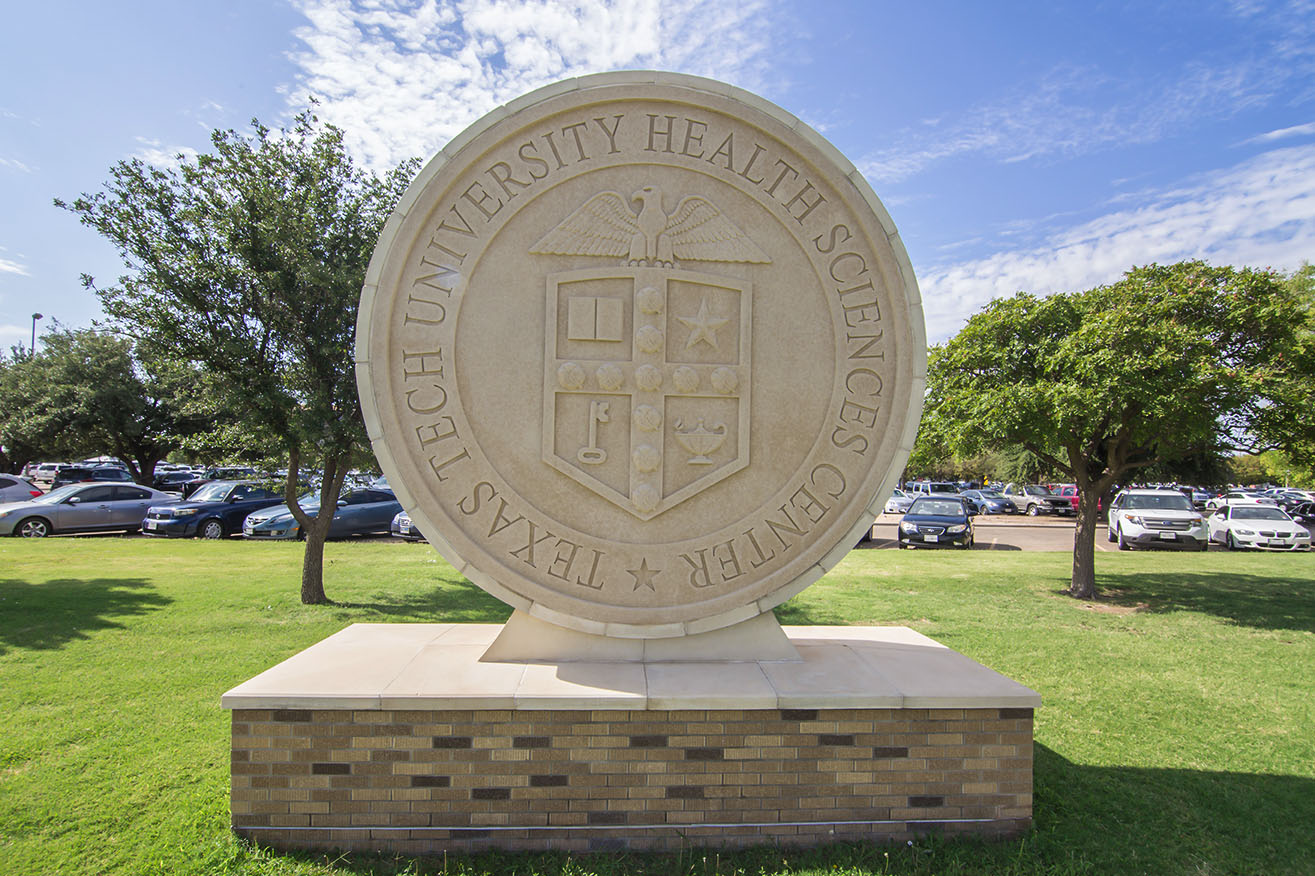Molecular Biophysics Concentration

Concentration Overview
The PhD program is designed primarily to train students for careers in biomedical and life sciences. Traditionally, graduates have found employment opportunities in academia and industry, including research and/or teaching in universities, biotechnology industry, and governmental agencies.
The core curriculum that is shared by all concentrations in the first semester of year one is used as a foundation for more specialized courses tailored to the students' specific needs. Faculty research programs are diverse, encompassing the general areas of structure-function studies, biochemistry and structural biology of membrane proteins, as well as some areas of cell and tissue physiology. Most of the research focuses on membrane proteins, and our Faculty has a close relationship with the Center for Membrane Protein Research (CMPR). Specific areas of research include membrane proteins (ion channels, transporters), membrane biophysics, and cell biology and physiology of the lung. The proteins of interest are associated with important diseases or disorders that include cardiac arrhythmias (potassium channels, connexins), genetic diseases (cystic fibrosis, migraine, deafness), neurological diseases (nAChR family; epilepsy, addiction, Alzheimer, Parkinson) and cancer (multidrug-resistance proteins, folate transporter).
Techniques that students may acquire vary widely and may include:
- Molecular biology (e.g., cloning, site-directed mutagenesis, library construction)
- Biochemistry (e.g., protein characterization, purification and activity)
- Biophysics (e.g., X-ray crystallography, electrophysiology (patch-clamp), spectroscopic methods that include fluorescence, FT-IR, CD, EPR)
- Cell biology (high-resolution imaging, biochemistry of cell signaling)
- Heterologous (over)expression of recombinant proteins
Applicants should have a demonstrated interest in research. All candidates for graduate degrees who hold assistantships must fulfill certain requirements while appointed as assistants.
Year 1, Fall
GSBS 5471 Core 1 Molecules
GSBS 5372 Core II Cells
GSBS 5373 Core III Genes
GSBS 5174 Core IV Biomedical Seminar
GSBS 5275 Core V Introduction to Biomedical Research
Total Credit Hours: 13
Year 1, Spring
GSBS 5101 Responsible Conduct of Research
GSBS 5098 Techniques in Biomedical Research
GMBP 5321 Biochemistry and Biophysics of Membranes
GMBP 5221 Experimental Biochemistry and Biophysics of Membranes (Elective)
GMBP 7101 Molecular Biophysics Seminar
GMBP 7000 Research
Total Credit Hours: 14
Year 1, Summer
GMBP 7000 Research
Total Credit Hours: 6
Year 2, Fall
GMBP 6305 Advanced Topics in GMBP or Elective
GMBP 7101 Molecular Biophysics Seminar
GMBP 7102 Readings in Molecular Biophysics
GMBP 7000 Research
Total Credit Hours: 9
Year 2, Spring
GMBP 6305 Advanced Topics in GMBP or Elective
GMBP 7101 Molecular Biophysics Seminar
GMBP 7102 Readings in Molecular Biophysics
GMBP 7000 Research
Total Credit Hours: 9
Year 2, Summer
GMBP 7000 Research
Total Credit Hours: 6
Year 3, Fall
GMBP 6305 Advanced Topics in GMBP or Elective
GMBP 7101 Molecular Biophysics Seminar
GMBP 7102 Readings in Molecular Biophysics
GMBP 7000 Research
Total Credit Hours: 9
Year 3, Spring
GMBP 6305 Advanced Topics in GMBP or Elective
GMBP 7101 Molecular Biophysics Seminar
GMBP 7102 Readings in Molecular Biophysics
GMBP 7000 Research
Total Credit Hours: 9
Year 3, Summer
GMBP 7000 Research
Total Credit Hours: 6
Year 4, Fall
GMBP 7101 Molecular Biophysics Seminar
GMBP 7102 Readings in Molecular Biophysics
GMBP 8000 Molecular Biophysics Doctoral Dissertation
Total Credit Hours: 9
Year 4, Spring
GMBP 7101 Molecular Biophysics Seminar
GMBP 7102 Readings in Molecular Biophysics
GMBP 8000 Molecular Biophysics Doctoral Dissertation
Total Credit Hours: 9
Current tuition information can be found here or by contacting Student Business Services from 8:30 a.m. to 4 p.m. CST at (806)
743-7867 for detailed fee information, including out-of-state tuition. The estimated
cost of the program can be found here.
Current tuition costs can be seen at the links below or by contacting Student Business Services from 8:30 a.m. to 4 p.m. CST at (806) 743-7867 for detailed fee information, including out-of-state tuition.
TTUHSC Student Business Services Main Page
TTUHSC Student Business Services Tuition Estimator
PhD students are eligible for financial support in the form of research assistantships at levels consistent with the policy of the Texas Tech University Health Sciences Center of $25,000 per year as of September 1, 2012.

Center for Membrane Protein Research
The long-term goal of the Center is to advance our knowledge of the structure and function of membrane proteins in health and disease. The Center brings together a group of TTUHSC and TTU investigators interested in the broad field of membrane-protein research. After completion of the human genome sequence, biomedical research has evolved into a combination of genomics, proteomics, and functional genomics. To a great extent, biomedical research in this century will be focused on prototypical proteins and protein families, including the determination of their structures, normal function, and their roles in human disease. From this knowledge will emanate rational design of new pharmacological agents that will open novel therapeutic approaches.
Membrane Protein Core Laboratory
The Membrane Protein Laboratory Core (MPLC), a shared facility of the Department of Cell Physiology and Molecular Biophysics (CPMB), houses equipment that is primarily accessible to the CPMB Faculty and their laboratory personnel, but is also available to Faculty throughout TTUHSC and TTU. The MPLC is equipped for the overexpression, purification and characterization of membrane proteins. Some of the equipment available includes digital gel-imaging systems (UV, visible and infrared), spectrophotometers, fluorescence/absorbance microplate reader, microplate washer, luminometer, spectrofluorometers, refrigerated shaker incubators, centrifuges and ultracentrifuges, probe sonicator, small and large volume microfluidizers, FPLC systems, phosphorescence lifetime spectrometers for luminescence resonance energy transfer measurements, rapid-mixing stop-flow system for absorbance, fluorescence and light-scattering determinations, CD and ATR/FTIR spectrometers for secondary structure determination, a picosecond lifetime system, static, and dynamic light scattering instruments, crystallization incubators, mosquito and NT8 Formulatrix crystallization robots, automatic UV microscopy system for crystal analysis, Rigaku Screen Machine for X-ray crystal screening and data collection, high-throughput automatic frog-oocyte injector, automatic Nanion port-a-patch and Orbit Mini patch-clamp systems, liquid scintillation counter, ITC and DSC microcalorimenters, and electron paramagnetic resonance spectrometer.
Admission Requirements
Requirements for admission are flexible and there are no minimum GPA or test score requirements. All applications are reviewed in a holistic manner, with no single factor determining a student's admission.
- Students may have a Bachelor's degree in any field but must include typical science courses (Chemistry, Biology, Zoology/Animal Science, etc.). A strong science background is encouraged.
-
The admission process for the Graduate School of Biomedical Sciences (GSBS) is more than just an application. To ensure that applicants can succeed in a graduate program, an applicant's personal qualities, work experience, and ability to work with different ideas and personalities within a program are also important admission factors.
-
Admission to any graduate degree program is granted by the Dean of the Graduate School of Biomedical Sciences upon the recommendation of the GSBS Admissions Committee and/or the program faculty.
- Average GPA of students offered admission is 3.41
- Average GRE of students offered admission is 309.
Application Information
Deadlines
| Semester | Application Open | Application Deadline | Campus |
|---|---|---|---|
| Fall Only | September 1 |
Early Review December 1 Regular Admission March 1 |
Lubbock |
How to Apply
Applications must be completed at BioRaider. It is the responsibility of the applicant to make sure that their application is complete by the application deadline to be considered for admission. Incomplete applications will not be reviewed for admission. The program reviews applications on a rolling admissions basis.
A complete application is comprised of the following:
- A completely submitted application on BioRaider.com , which includes an Essay/Personal Statement
- At least 2 letters of reference written within the year of application
- Paid Application Fee
- Official College Transcripts for all institutions attended
Please note that the GRE or MCAT is optional.
GRE is optional. GRE scores can be submitted using the ETS Institution Code 6851.
- We require official transcripts from all U.S. institutions attended, including those institutions for which you received transfer credit toward your undergraduate degree.
- Electronic official transcripts from U.S. institutions are preferred and should be sent to: graduate.school@ttuhsc.edu.
- Do NOT send international transcripts and/or mark sheets. See the application instructions for more information.
- Hard copy official transcripts should be mailed to:
Texas Tech University Health Sciences Center
Graduate School of Biomedical Sciences
3601 4th St. MS 6206
Lubbock, TX 79430-6206
Click here to download in depth application instructions for BioRaider.com.
But what is happiness except the simple harmony between a man and the life he leads?
Michaela Jansen Ph.D.
Program Director Molecular Biophysics

